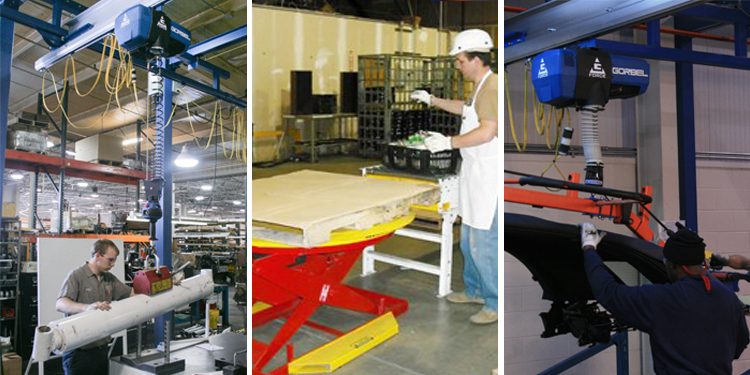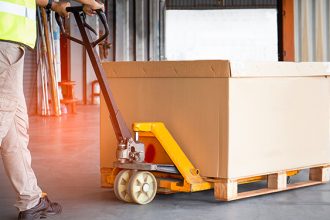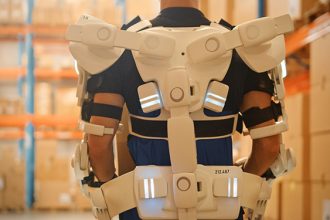Ergonomic Equipment, Best Practices Reduce Risk Of Repetitive Motion Injury

When considering the primary cause of on-the-job musculoskeletal injuries, most people likely envision a one-time event, such as an employee lifting a heavy box while bending from the waist instead of their knees or twisting in an awkward position to reach an item stored overhead and straining a muscle. In reality, however, it’s the cumulative effect of repetitive motion — or performing the same function over and over — that causes 60% of work-related musculoskeletal disorders (MSDs), according to the Occupational Safety and Health Administration (OSHA).
While the negative impact of carpal tunnel syndrome on hands and wrists experienced by office workers often gets the press, repetitive motion injuries in nearly any job can impact a variety of different parts of the body. Nearly 1.8 million workers are impacted by these injuries annually, costing as much as $20 billion per year in lost time, reduced productivity, medical and surgical treatments, and long-term disability.
Whether in the factory or on the warehouse floor, there are multiple ways to alleviate the stress and strain associated with performing repetitive tasks. These include both best practices in workforce management, as well as the utilization of ergonomic equipment and solutions to help employees perform their daily assignments while significantly reducing the risk of injury.
One of the most popular and easy-to-implement approaches to reducing repetitive stress is deploying a job rotation strategy. This ensures that each employee switches from one task to another throughout the day or week. By performing different work assignments, various parts of the body do remain under force to some degree. However, the exact area of the body, as well as the type of stress experienced, changes based on the job being performed. This “spreading of the force” means that no single muscle, tendon, or other area of the body takes the brunt of the work each day.
Job rotation may not always be possible for certain operations. For example, those that are limited by the size of their workforce, complexity of training required to do the job, and the range of experience of individual employees may have a more difficult time switching workers’ assignments. When this is the case, it is important for the workers themselves to be educated about the potential impact of repetitive movements on the body — even if the materials being handled are light. It’s critical to ensure they understand that it’s not the weight of the item, but rather the repetitive nature of the task (such as reaching, bending, twisting, and lifting), that leads to an injury.
Additional best practices for reducing repetitive motion injuries in an industrial environment are also available from the members of the Ergonomic Assist Systems & Equipment (EASE) Industry Group. They also provide equipment and accessories specifically engineered to minimize strains on the body. There are a broad range of solutions available, including three of the most commonly deployed:
Rotating Lift Tables. Whether fixed in a single location or on wheels for portability to different locations within a work area, rotating lift tables keep the material or task at hand located close to the employee performing the work, thus reducing the need to reach for individual items. Reaching out puts more strain on the lower back than bending over. This equipment is also designed to be adjusted up or down, keeping the material at the optimum height for the worker and significantly minimizing the need to bend or stretch.
Overhead Lifting and Positioning Devices. Especially when used in conjunction with ergonomically focused workstation cranes, these positioning and lifting devices also play a huge role in reducing the strains associated with manually lifting a load or workpiece. While some of the most recognizable overhead hoists and cranes are enormous and utilized to lift multi-ton loads, a large portion of the hoists manufactured and sold are actually engineered to lift loads weighing less than 250 pounds. When powered by electricity, chain hoists perform the physical lifting and positioning action while under complete control by the operator. This negates any need to manually maneuver the load. Further, a broad range of attachments can be added to a hoist, such as vacuums, magnets, tongs, and related tooling. These accessories ensure a precise connection to the load, reducing the need for the worker to utilize a “one size fits all” approach to lifting and positioning.
Intelligent Lifting Devices. Incorporating many of the benefits of hoists, these “smart” lifting devices can be programmed with certain parameters to meet the needs of the individual operator and of the job being performed. These devices handle a wide range of materials and allow the load to “float,” eliminating the need for the worker to apply physical effort to the lifting or positioning process. The units may also be programmed to restrict movement to a limited range, preventing the operator from performing any action that might place excess strain on a body part during a repetitive lifting process.
Looking for more ways to improve the ergonomics of your workforce and reduce the risk of repetitive stress injuries in your operation? In addition to sharing ergonomic best practices and supplying ergonomic equipment, the members of EASE also offer a broad range of resources, checklists, technical papers, and other tips for safer handling.



